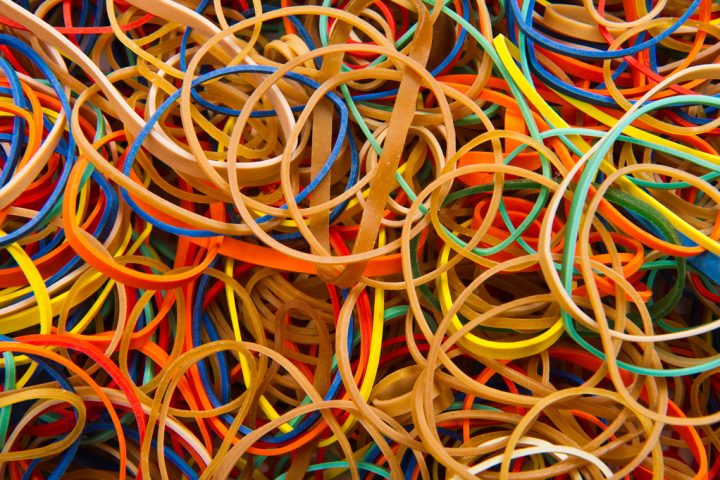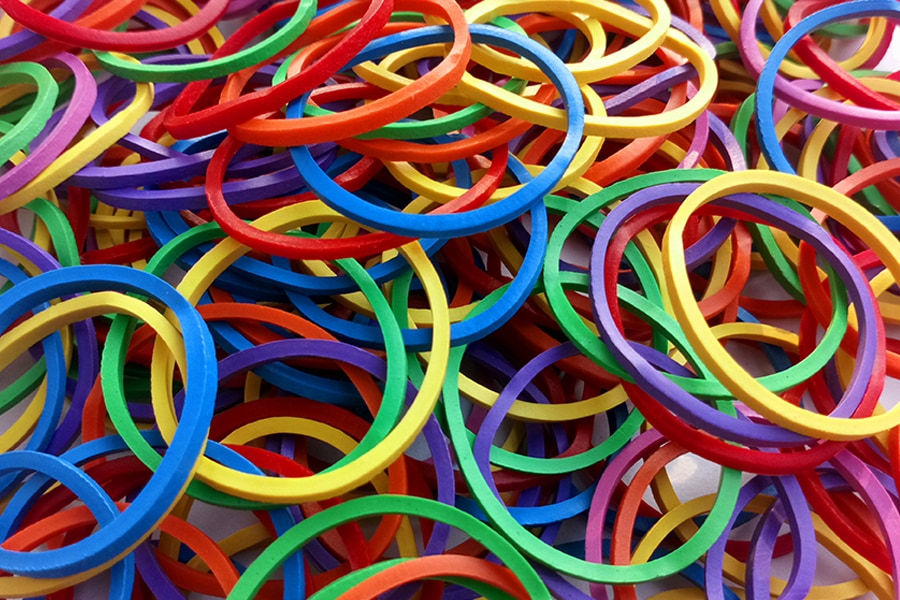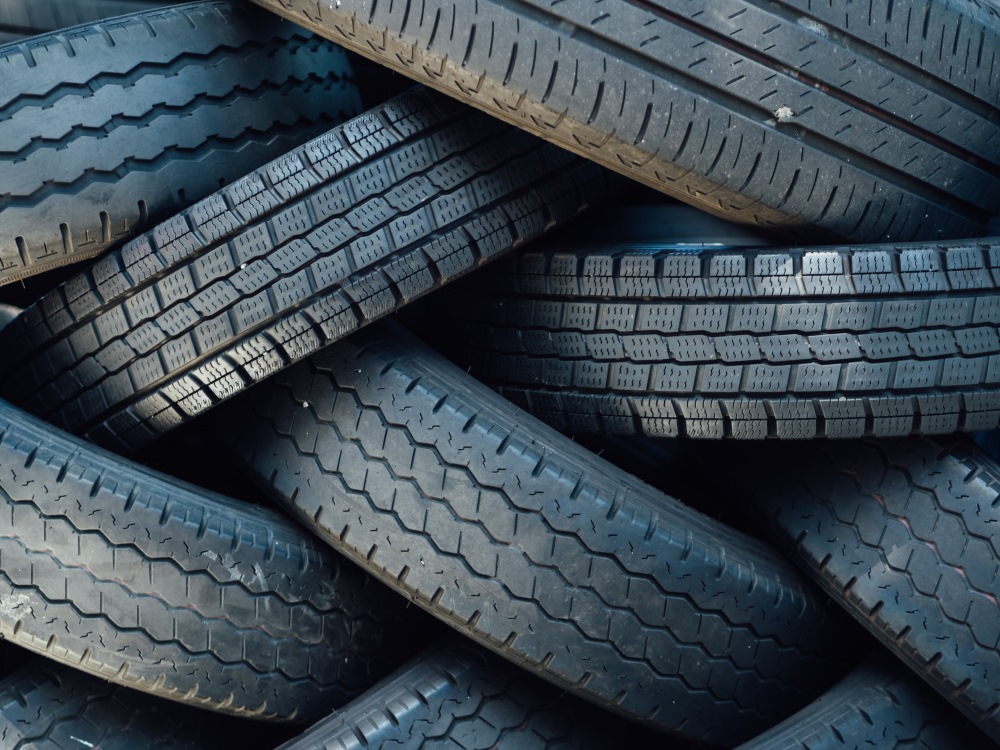Rubber City Sports - The Heart Of Play
You know, it’s kind of neat to think about where some of the stuff we use in our everyday play, like what makes up so much of what we call rubber city sports gear, actually comes from. It's more than just a material; it’s a key part of how we move and compete. This stretchy substance, whether it comes from a tree or is made by people, has a big job to do in the things we use for fun and competition. It helps us jump, run, and generally get around on the field or court with a bit more spring in our step. So, when you think about the items that help make sports happen, this flexible stuff is often right there at the core of it all.
This material, which some folks call india rubber or even caoutchouc, starts out as a collection of tiny pieces of a natural organic compound, isoprene, with just a few other bits mixed in. It’s pretty wild, when you think about it, how something so simple at its start becomes so important for athletic gear and playing fields. It’s what gives a ball its bounce, a shoe its grip, or a surface its give. Without this special material, a lot of the ways we enjoy games would feel quite different, really.
So, as we talk more about what makes up rubber city sports, keep in mind that the material itself is a big part of the story. It’s a substance that can stretch and then go back to its original shape, which is a very useful trick for many things we use in games and physical activities. This ability to stretch and return is what makes it so special and why it’s found in so many places where people are active and playing, you know?
- The Enigmatic Journey Of Theo James A Star In The Making
- Unveiling The Charisma Of John Stamos Young
- Aishah Sofey New Leaked
- Sophie Rain Leaked Nudes
- 2 Babies One Fox
Table of Contents
- What is this Rubber Stuff, Anyway?
- Where Does Rubber for Our Sports Come From?
- Why is Rubber Good for Sports?
- How Does Rubber Help Us Play Better?
- What Are Some Uses for Rubber in Rubber City Sports?
- Does Rubber City Sports Use Different Kinds of Rubber?
- The Journey of Rubber City Sports Material
- The Future of Rubber City Sports Materials
What is this Rubber Stuff, Anyway?
So, what exactly is this material we keep talking about that plays such a big part in rubber city sports? Well, it’s a pretty special kind of substance. People call it by a few names, like india rubber, or sometimes even caucho or caoutchouc. At its most basic, when it first shows up, it’s made up of big chains of a simple organic compound called isoprene. There are usually just tiny bits of other things mixed in with it, too, which is kind of interesting to think about.
This material is known for being stretchy, a quality that makes it super useful. It’s a substance that we get from a couple of main places. One way is from the milky liquid that oozes out of certain plants that grow in warm, tropical areas. This is what we call natural rubber. The other way we get it is by making it in factories, using things like petroleum and natural gas. That’s what we call synthetic rubber, and both kinds play a role in how we make things for rubber city sports, you know?
People have been figuring out what rubber is, where it comes from, and how to make it useful for a very long time. It’s a story of discovery and cleverness, really. We’ve learned so much about its makeup, like how it’s an elastomer – a big, flexible molecule that can stretch out and then snap right back to its starting shape. This ability is a big reason why it’s so valued for all sorts of items, including those that help us enjoy rubber city sports activities. It’s a pretty cool bit of chemistry, in a way.
- Himynamestee Only Fans
- Moderno Sombreados Cortes De Cabello Hombres
- Christopher Walken Net Worth
- %D9%83%D9%85 %D8%A7%D9%84%D9%85%D8%B3%D8%A7%D9%81%D8%A9 %D8%A8%D9%8A%D9%86 %D8%A7%D9%8A%D8%B1%D8%A7%D9%86 %D9%88%D8%A7%D8%B3%D8%B1%D8%A7%D8%A6%D9%8A%D9%84
- From Champion To Inspiration Ronnie Coleman Now
The Beginnings of Rubber City Sports Material
Thinking about where this amazing material comes from, it's quite a journey. A good deal of it starts as a milky, gooey liquid, a bit like sap, that you find inside certain plants. This liquid, which we refer to as latex, is harvested from trees, especially the hevea brasiliensis, which is also known as the para rubber tree. These trees, you know, they really love warm places, so they grow mostly in tropical areas, like parts of South America. It’s a pretty neat natural process, honestly, how this substance just comes right out of a tree.
This natural form of rubber is a truly wonderful thing. It’s an elastomer, meaning it’s a big molecule that has a special trick: it can be pulled and stretched quite a bit, and then, almost like magic, it goes right back to how it was before. This is a very important quality for anything that needs to be flexible but also hold its shape, like many things you’d find in rubber city sports. It’s this natural springiness that makes it so useful for a lot of our gear, giving it that familiar give and bounce.
So, when you see something that stretches and recovers, like a certain part of your athletic shoe or a piece of equipment, there’s a good chance that this natural material is doing a lot of the work. It’s a substance that has been around for ages, and people have learned over time how to collect it and prepare it so it can be used for all sorts of things. This natural beginning is a big part of the story of how items for rubber city sports get their special feel and function, you know, it really is.
How Does Rubber Get Made for Rubber City Sports?
Once we have that milky liquid from the trees, or the basic stuff for making rubber in a factory, there are some steps to make it into the solid, bouncy material we recognize. For the natural kind, the liquid is collected, and then it goes through some processes to turn it into a more solid form. It’s like, a bit of a transformation from a liquid to something you can actually hold and shape. This is how we get the raw material that’s ready to become something useful for rubber city sports.
For the man-made versions, it’s a different process, but the goal is the same: to create a substance that has those stretchy, springy qualities. These kinds are made using chemical reactions, often starting with materials that come from petroleum or natural gas. It’s pretty clever how scientists and engineers figured out how to put these simple parts together to make something that acts so much like the natural stuff. This gives us even more options for how we make things for rubber city sports, which is quite handy.
No matter if it’s from a tree or made in a plant, the material often goes through a special treatment called vulcanization. This is a very important step where the material becomes even more elastic and tough. It’s what helps it keep its shape better and last longer, especially when it’s stretched and used over and over again, like in athletic equipment. This step is a big reason why the items we use for rubber city sports can stand up to a lot of wear and tear, and still perform well, you know?
Where Does Rubber for Our Sports Come From?
So, where does all this amazing material actually begin its journey before it ends up in our athletic gear and playing fields? It turns out, there are two main ways we get it, each with its own story. Knowing where it comes from helps us appreciate why it acts the way it does when we use it for all sorts of rubber city sports activities. It’s like, understanding the roots of something helps you understand its strength, you know?
One way is from the earth itself, from certain tropical plants. This is the original way people found and used this material. The other way is through human ingenuity, where we create it using different chemical processes. Both types have their own special qualities and are used for different purposes, but they both give us that stretchy, flexible substance that’s so important for play. It’s pretty neat how we have these two paths to get the same basic kind of material.
So, whether you’re talking about a ball that bounces just right or a shoe that gives you good grip, the material that makes it possible probably came from one of these two main sources. It’s a pretty simple idea, but it has a big impact on how we make and use things for rubber city sports. Knowing this helps us see the bigger picture of how our athletic world is put together, you know?
Natural Sources for Rubber City Sports Gear
Let’s take a closer look at where the natural kind of this stretchy material comes from. It’s harvested from trees, specifically the hevea brasiliensis, which is often called the para rubber tree. These trees are usually found in warm, wet places, like the tropical areas of South America, with Brazil being a big spot for them. It’s a truly natural process, collecting the milky liquid, the latex, from these trees. This is the very start for a lot of the items we use in rubber city sports.
The way it works is that people carefully cut into the bark of the tree, and the milky liquid starts to flow out. It’s collected in little cups, and then it’s taken away to be processed. This liquid is mostly made up of those isoprene polymers, the tiny building blocks that give the material its unique qualities. It’s quite a simple process, but it’s been done for a very long time, providing us with a very useful natural resource for rubber city sports and beyond.
This natural version of the material is known for its excellent ability to stretch and go back to its original shape, which is a very important quality for many athletic items. It’s also pretty tough and can stand up to a good bit of wear and tear. So, when you’re using something that feels really flexible and bouncy, there’s a good chance it’s made from this natural tree-derived substance. It’s a wonderful gift from nature that helps us play, you know?
Man-Made Kinds of Rubber City Sports Elements
Besides the natural stuff, we also have man-made versions of this stretchy material. These are created through chemical processes, usually starting with things that come from petroleum and natural gas. Scientists and engineers have figured out how to put different chemical pieces together to make a substance that acts a lot like the natural kind. This gives us even more ways to make things for rubber city sports, which is pretty clever, honestly.
The great thing about these man-made versions is that we can often change them a bit to have specific qualities. For example, some might be made to be extra resistant to heat, or to certain chemicals, or to last a really long time even when they’re used outdoors. This means we can pick just the right kind of material for a particular piece of athletic gear or a specific playing surface. It’s like, having a whole toolbox of different options for rubber city sports items.
These man-made types are also elastomers, meaning they can stretch and return to their original form, just like the natural kind. They’re a big part of why so many of our modern athletic items work so well. They allow for a lot of freedom in how things are made, and they help ensure that our gear can stand up to the demands of active play. It’s a testament to human cleverness, really, creating something so useful for sports.
Why is Rubber Good for Sports?
So, with all these different ways to get this material, why is it such a big deal for sports anyway? What makes it so special that it shows up in so many things we use for playing games and being active? The answer really comes down to a few key things about how the material behaves. It’s got some qualities that are just perfect for the demands of athletic activities, you know?
One of the biggest reasons is its ability to stretch and then go right back to its original shape. Think about a basketball bouncing or a running shoe cushioning your foot – that’s this material doing its job. It absorbs impact and then releases energy, which is super helpful for all sorts of movements in sports. It’s like, a built-in spring that helps things move and react the way they should, which is pretty cool.
Another thing is that it can be made to be very tough and resistant to things like water, chemicals, and even just a lot of repeated use. This means that sports equipment made with this material can last a long time, even when it’s used in all kinds of weather or on different surfaces. So, it’s not just about flexibility; it’s about durability too, which is a big plus for anything related to rubber city sports.
What Makes Rubber City Sports Gear Stretchy?
The secret to why this material is so stretchy, and why it’s so good for rubber city sports gear, is in its basic makeup. It’s what we call an elastomer. This means it’s made of very large molecules that are kind of tangled up together, but not rigidly so. They have a lot of freedom to move and slide past each other when you pull on them, which is what makes the material stretch out. It’s a bit like a bunch of coiled springs all linked up, you know?
When you let go, these tangled molecules want to go back to their original, more relaxed state. So, they snap back, pulling the material with them. This ability to deform and then regain its shape is what makes it so useful for things that need to be flexible and resilient. Think about a tennis ball, or the sole of a running shoe – they need to give a little, but then return to their form quickly. That’s the elastomer doing its thing, basically.
This special characteristic is also improved by that process called vulcanization we talked about earlier. That treatment creates little links between the long molecular chains, which helps them hold together better and snap back more effectively. It’s like, giving the material a bit more structure so it can perform its stretchy magic over and over again without losing its shape. This is why so many items for rubber city sports feel just right, because of this underlying flexibility.
How Does Rubber Help Us Play Better?
So, how does all this science about a stretchy material actually help us when we’re out playing or competing? Well, it plays a pretty big part in making our athletic experiences better. For one, it provides excellent grip. Think about the soles of your athletic shoes on a court or field; the material helps you stop, start, and change direction without slipping. This means more control and less chance of a tumble, which is very helpful for rubber city sports.
It also gives us bounce and rebound. This is obvious in balls – basketballs, soccer balls, tennis balls – they all get their lively spring from this material. But it’s also in things like track surfaces or gym floors, where the material helps absorb impact and return energy, making it easier on our bodies and helping us move more efficiently. It’s like, adding a bit of extra spring to every step or jump, you know?
Furthermore, it offers protection and cushioning. Many pieces of protective gear, from shin guards to mouthguards, use this material to absorb blows and keep us safe. It also helps cushion our joints from repeated impact, which is super important for athletes who are constantly running or jumping. So, it’s not just about performance; it



Detail Author:
- Name : Karelle Marks MD
- Username : olin.padberg
- Email : leann63@franecki.net
- Birthdate : 1999-04-17
- Address : 80290 Kallie Common Windlerhaven, VT 68965-5612
- Phone : +1.678.691.6086
- Company : Jenkins, Williamson and Crona
- Job : Personnel Recruiter
- Bio : Est et accusantium odio aperiam natus doloribus. Autem non odio dolores et dolorum. Sit ut dolores consequatur fugit beatae omnis occaecati dolorem. Voluptatem nostrum officia hic.
Socials
linkedin:
- url : https://linkedin.com/in/kobe_real
- username : kobe_real
- bio : Quos nobis voluptatem placeat.
- followers : 4513
- following : 2555
instagram:
- url : https://instagram.com/krunolfsdottir
- username : krunolfsdottir
- bio : Ut blanditiis consequatur et voluptas excepturi minus explicabo. Hic illo ipsa tenetur ut quidem.
- followers : 1060
- following : 2444
facebook:
- url : https://facebook.com/kobe6759
- username : kobe6759
- bio : Ea ipsum et non ut commodi explicabo dolor.
- followers : 6744
- following : 2492
tiktok:
- url : https://tiktok.com/@kobe.runolfsdottir
- username : kobe.runolfsdottir
- bio : Ut suscipit rerum necessitatibus perspiciatis commodi.
- followers : 6155
- following : 1991
twitter:
- url : https://twitter.com/kobe_runolfsdottir
- username : kobe_runolfsdottir
- bio : Ab maxime molestias beatae. Commodi et perspiciatis dolor.
- followers : 4444
- following : 1978